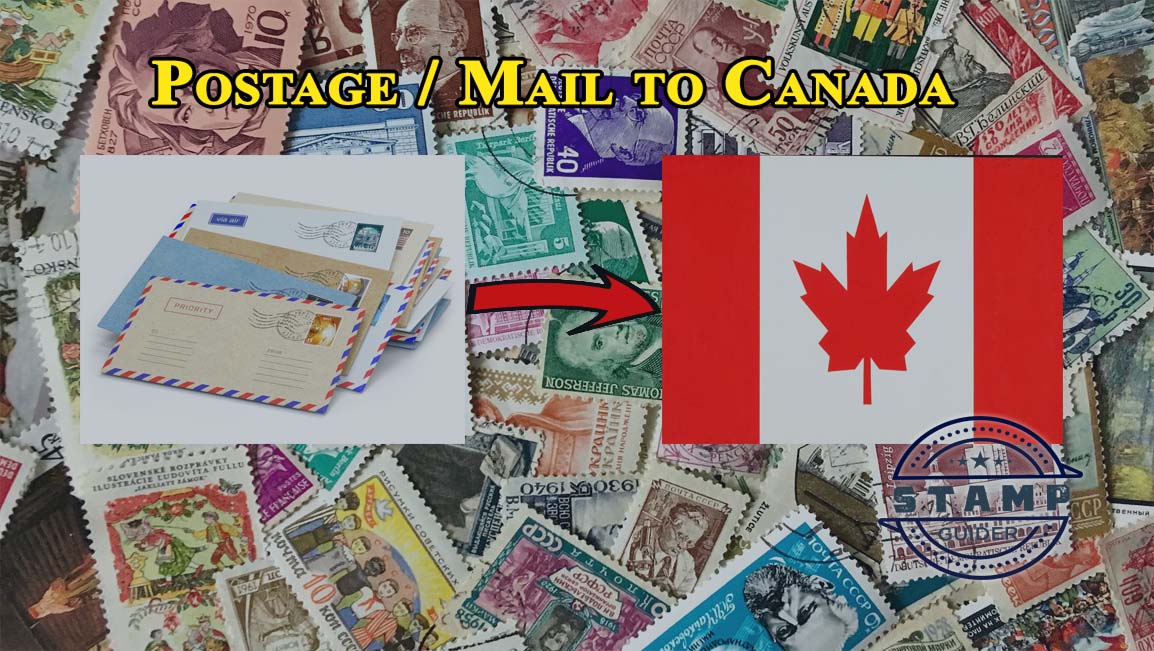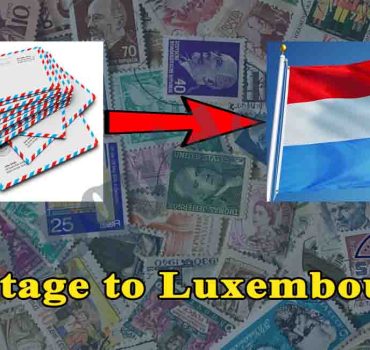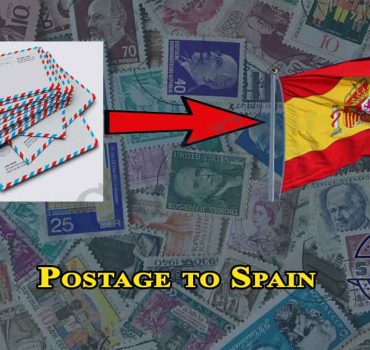Shipping to Canada should be as easy as shipping within the continental United States; after all, everything is part of the same landmass. However, remittances to Canada are considered international and therefore are subject to international remittance fees.
The easiest way to send letters from the United States to Canada is by using Global Forever stamps for $ 1.20 each. You can also use regular domestic stamps forever, as long as they total $ 1.20. Unlike all other international destinations, the world stamps for Canada are: Buy One, Get One Within First 2 Ounces. BOGO! For more than 2 ounces, you want to add the necessary additional shipping costs. This is the first class mail you will ever need to send letters to Canada, which is in “Group 1” on the USPS price list.
This article describes the best carriers for shipments to Canada, the unique shipping requirements, and the postage required for postcards, envelopes, and standard packages.
Table of Contents
Best Carriers for Postage / Mail to Canada
United States Postal Service (USPS), Federal Express (FedEx), and United Parcel Service (UPS) ship to Canada.
For lightweight envelopes and packages, the USPS is usually the most affordable carrier. The USPS transports all envelopes and packages to the border, where they are delivered to the Canadian Post Office (the Canadian equivalent of the USPS), which delivers them to their final destination.
The maximum USPS package weight is 66 pounds for shipping to Canada. If you are shipping a package over 66 pounds, UPS tends to be the more affordable option.
If you need your package to arrive quickly or at a specific time, FedEx is the best shipping option. FedEx offers final delivery days and has several shipping services that can guarantee delivery within a specified time frame.
Because the USPS is the best option for sending most letters, the shipping costs listed in this article will reflect USPS prices (unless otherwise noted).
Postage to Send Postcards to Canada
Postcards can be sent via USPS using international postage rates. To send a postcard to Canada, you will need $ 1.20 for postage, which can be covered by one First Class Forever World Stamp ($ 1.20) or three First Class Forever Stamps (1 , $ 65).
The USPS defines postcards as rectangular cards with dimensions between 3.5 × 5.0×0.007 inches and 4.25 × 6.0×0.016 inches. Cards outside of these dimensions (or not rectangular) require additional postage.

Postage to Send Standard Envelopes to Canada
Envelopes can be shipped to Canada using USPS international postage rates. To send an envelope weighing less than 85 grams to Canada, you will need $ 1.20 for postage. You can use one Global First Class Forever badge ($ 1.20) or three First Class Forever badges ($ 1.65).
If your envelope weighs more than 85 grams, you will need additional postage of $ 0.49 for each additional ounce.
The USPS defines standard envelopes as envelopes with dimensions between 3.5 × 5.0×0.25 inches and 6.125 × 11.5 × 0.25 inches. If your envelope is rigid or not rectangular, it will be considered non-machinable, which means it will have to be separated by hand. Non-machinable envelopes require an additional $ 0.21 for postage.
Postage to Send Large Envelopes to Canada
Large envelopes can be shipped to Canada using USPS international postage rates. The USPS considers large envelopes to have dimensions between 6.125 × 11.5 × 0.25 inches and 12x15x 0.75 inches.
The shipping costs required for sending large envelopes depend on the weight of your envelope:
Weight |
Postage Required
|
Stamps Required |
|---|---|---|
| 1.0 ounce | $2.40 | 2 Global Forever Stamps ($2.40) or 5 First Class Forever Stamps ($2.75) |
| 2.0 ounces | $2.63 | 3 Global Forever Stamp ($3.60) or 5 First Class Forever Stamps ($2.75) |
| 3.0 ounces | $2.85 | 3 Global Forever Stamp ($3.60) or 6 First Class Forever Stamps ($3.30) |
| 4.0 ounces | $3.06 | 3 Global Forever Stamp ($3.60) or 6 First Class Forever Stamps ($3.30) |
| 5.0 ounces | $3.28 | 3 Global Forever Stamp ($3.60) or 6 First Class Forever Stamps ($3.30) |
| 6.0 ounces | $3.50 | 3 Global Forever Stamp ($3.60) or 7 First Class Forever Stamps ($3.85) |
| 7.0 ounces | $3.72 | 4 Global Forever Stamp ($4.80) or 7 First Class Forever Stamps ($3.85) |
| 8.0 ounces | $3.94 | 4 Global Forever Stamp ($4.80) or 8 First Class Forever Stamps ($4.40) |
| 9.0 ounces | $5.03 | 5 Global Forever Stamp ($6.00) or 10 First Class Forever Stamps ($5.50) |
| 10.0 ounces | $5.03 | 5 Global Forever Stamp ($6.00) or 10 First Class Forever Stamps ($5.50) |
| 11.0 ounces | $5.03 | 5 Global Forever Stamp ($6.00) or 10 First Class Forever Stamps ($5.50) |
| 12.0 ounces | $5.03 | 5 Global Forever Stamp ($6.00) or 10 First Class Forever Stamps ($5.50) |
| 13.0 ounces | $6.12 | 6 Global Forever Stamp ($7.20) or 12 First Class Forever Stamps ($6.60) |
Postage to Send Packages to Canada
The postage required to send packages to Canada is based on the size and weight of the package. You can calculate the cost of posting your package using the USPS Franchise Price Calculator.
To use the USPS postage price calculator, follow these steps:
- Follow the link to the USPS Posting Price Calculator.
- In the “Which country is your destination” drop-down menu, select “Canada”.
- Enter the postal codes of your shipping location and destination. The USPS Postage Price Calculator has a convenient postal code identifier for Canadian counties and provinces, in case you don’t know the destination postal code right away.
- Enter the date and time when you plan to ship your order.
- Select the type of package you want to send.
- A new page will appear with the price of several shipping options in your area.
- You can choose the shipping method of your choice based on the desired delivery date. After determining the shipping method you want to use, you can print a label using USPS Click-N-Ship.
If you want to avoid the hassle of calculating the size and weight of your package, you can also ship items using USPS Flat Rate boxes. Flat fee boxes come in various sizes and can be shipped for a standard fee (regardless of the weight of the content). For more information about the flat rate shipping options offered by the USPS, visit USPS Priority Mail.
Delivery times in Canada
The average delivery time for First Class Postcards and Envelopes sent by USPS First Class Mail International (the standard shipping option used) is 7-21 days. If you send postcards or envelopes using Priority Mail International, the delivery time will be reduced to 6-10 days. Priority Mail Express International is the most expensive option for postcards and letters, but guarantees delivery in 3-5 days.
Package delivery times depend on the carrier and shipping method you choose. Customs can also delay the delivery of packages. Typically, packages shipped with USPS, FedEx, and UPS take 2-7 days to reach their final destination.
Address correspondence to Canada
The addresses in Canada are similar to those in the continental United States. Addresses should be completed as follows:
Recipient’s name
Address
County, province, postal code
Name of the country
Example:
John smith
10-123 Main Street
Montreal, QC H3Z 2Y1
Canada
Additional information on each line of the address is shown below:
Line 1: recipient’s name
This line should reflect the name of the person or company you are sending to.
Line 2: Address
When you write the mailing address, you want to write the unit or apartment number (if applicable), followed by the street number. The unit or apartment number and the house number must be separated by a hyphen, as shown in the example above.
Directions and street types should be abbreviated to the same abbreviations used in the United States.
Line 3: Municipality, province, postal code
County, province, and zip code will follow the same format as city, state, and zip code in the United States. The names of the municipalities must be written and the names of the provinces must be abbreviated. For a complete list of provincial abbreviations, see Canada’s Postal Addressing Guidelines.
Canadian postal codes consist of a sequence of six letters and numbers divided into two sets of three. They follow the format A1A 1A1, where A represents a letter and 1 represents a number. When writing a Canadian postal code, the two sets of three should always be separated by a space and not by a hyphen.
The first three digits of the Canadian postal code are known as the forward sortation area (FSA) and represent the geographic location of the address. The next three digits are known as the Local Distribution Unit (LDU), which designates a more specific area within the FSA.
Line 4: country name
This line represents the country where the final destination of your package is located (in this case, you must write “Canada”).
Customs forms for shipments to Canada
Packages sent to Canada require customs forms. Packages entering Canada are examined by the Canada Border Services Agency (CBSA). Any package over CAN $ 20 may be traced and receive an additional processing fee.
If you are shipping with USPS, customs declarations are incorporated into your package label and no additional documentation is required. If you are shipping with UPS, you can complete your customs forms using UPS Electronic Data Interchange (EDI). If you ship with FedEx, you can complete your customs forms using FedEx Electronic Trade Documents (ETDs).
If you are concerned about your customs forms or are unsure of how to complete them, employees at USPS, FedEx, and UPS will be happy to help you complete the forms and prepare your package for shipping.
Items prohibited from importing into Canada
Each country has its own set of rules regarding items that are prohibited from being imported or exported. Being able to ship an item from the United States does not guarantee that the item will pass through customs and enter your destination country. Therefore, it is important to make sure that the items you are shipping are not included on Canada’s list of prohibited items.
Some of the more common items that cannot be shipped to Canada include:
- Live animals (with a few exceptions, including bees, parasites, leeches, young and some small cold-blooded animals)
- Tobacco articles in any form, including cigarettes, cigars, chewing tobacco and electronic cigarettes)
- Specific plant species
- Piece of money
- Lottery tickets or any other gambling related item
For a complete list of import bans and restrictions in Canada, see FedEx Canada’s List of Prohibited and Restricted Items.
Additional special services
Determine any additional services you need. A shipping certificate is a document issued by the post office that records the date and time a particular package was sent. This service has an additional cost of $ 1.45, as of publication date. Sending a letter or package by registered mail costs at least $ 16.00 more.
Selecting recorded correspondence gives the package or envelope a tracking number and barcode, which are scanned as the package is delivered. Express Mail comes with its own advanced tracking system, making registered mail unnecessary. You can also insure your packages at variable rates.
Buy and apply
While purchasing postal services online for domestic mail can save money, the same discounts are not available for services in Canada. The price of the “Click and Send” message is the same as the purchase of the message in store. However, buying and printing your mail online offers the convenience of being able to send directly from your door, without having to go to the post office.
advice
Private companies like Federal Express and DHL also offer international shipping. Prices vary depending on the size of the package, the delivery options selected and the destination.


